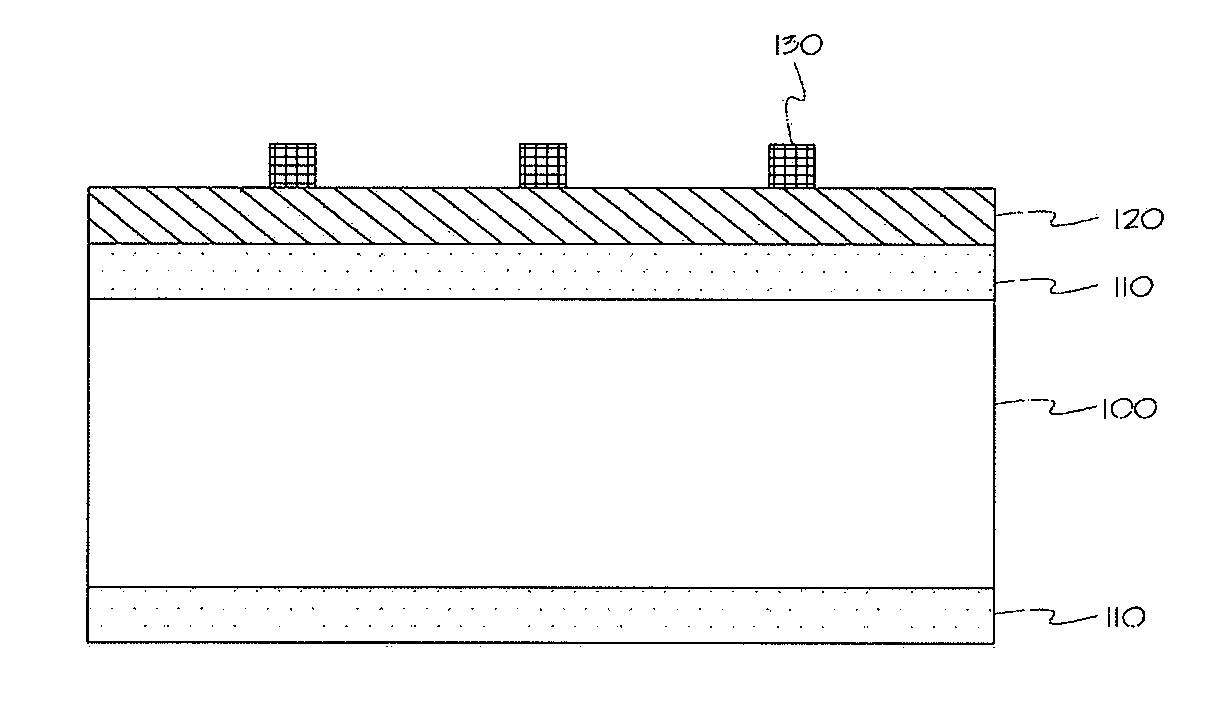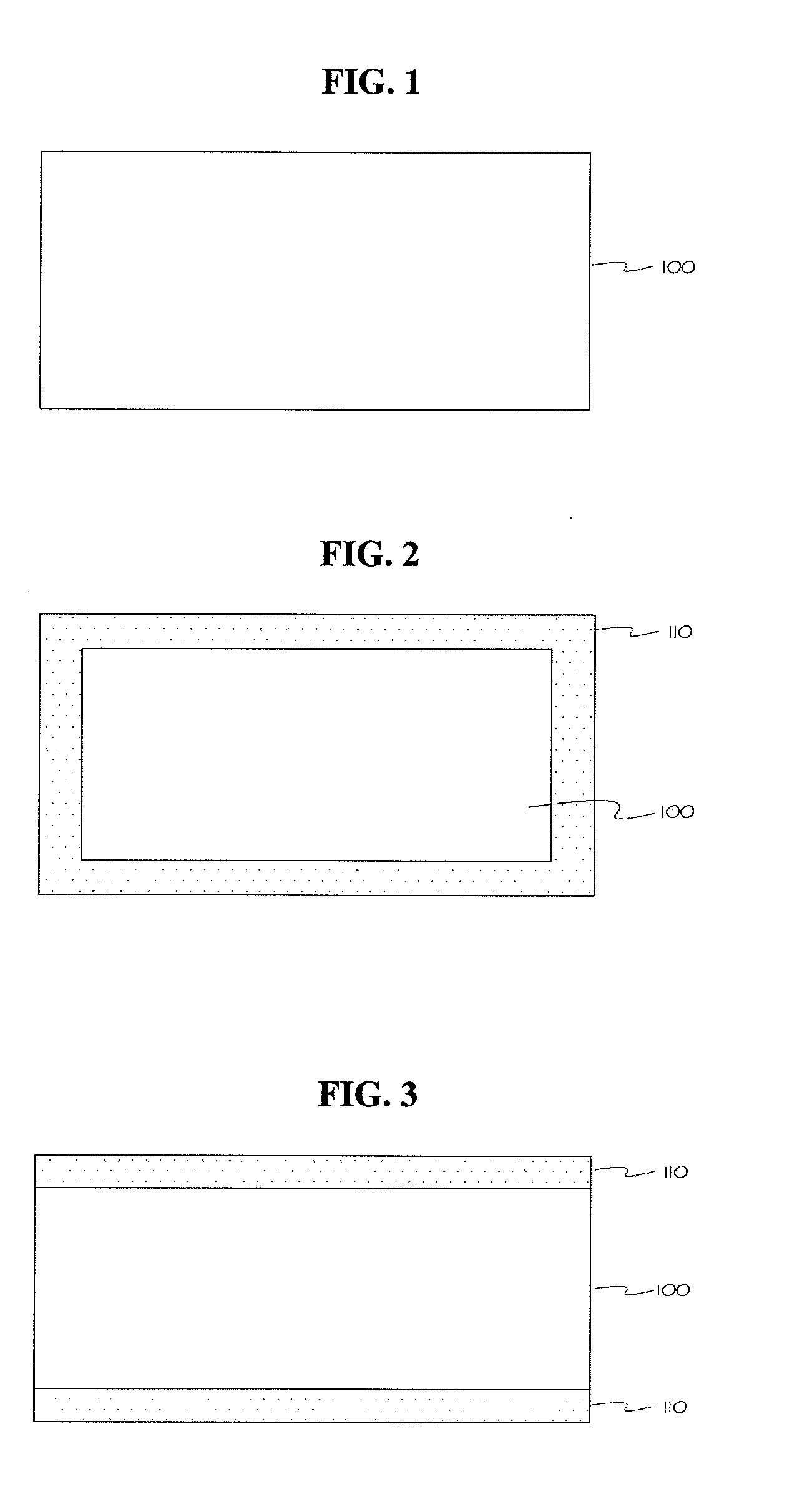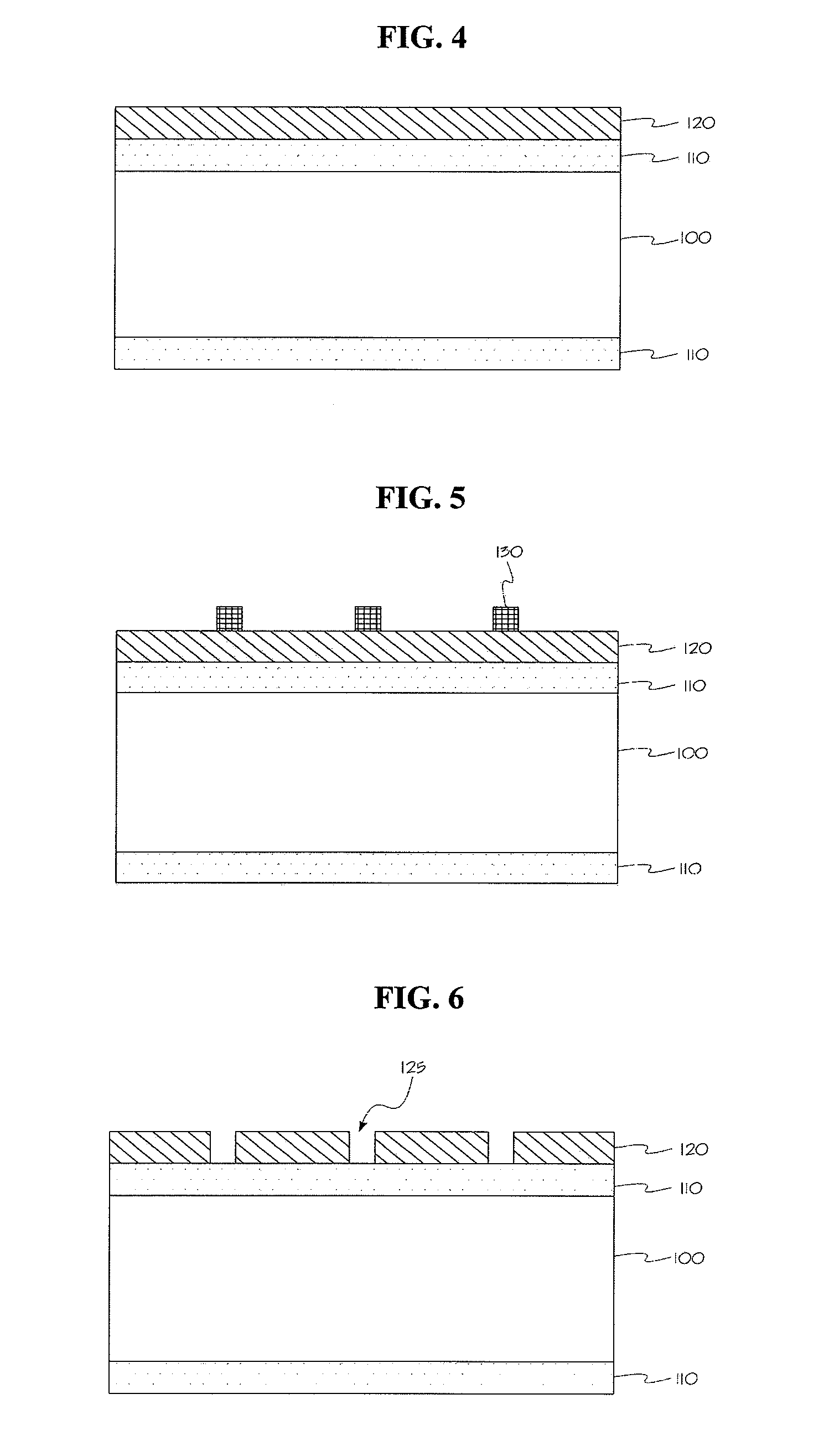Solar cell and fabricating method thereof
- Summary
- Abstract
- Description
- Claims
- Application Information
AI Technical Summary
Benefits of technology
Problems solved by technology
Method used
Image
Examples
Embodiment Construction
[0053]The advantages and features of the present invention, and the way of attaining them, will become apparent with reference to embodiments described below in conjunction with the accompanying drawings.
[0054]FIGS. 1 to 9 are sectional views sequentially illustrating a fabricating method of a solar cell in accordance with embodiments of the present invention.
[0055]FIGS. 1 to 8 are sectional views schematically illustrating a fabricating process of a completed solar cell shown in FIG. 9. Embodiments of the solar cell are not limited thereto, but may be fabricated through various processes which do not deviate from the technical scope of embodiments of the present invention.
[0056]First, as shown in FIG. 1, a substrate 100 (also referred to as a p-type semiconductor substrate 100) is prepared by doping a semiconductor substrate with a p-type semiconductor impurity. Examples of the semiconductor for the p-type semiconductor substrate 100 may be silicon.
[0057]In FIG. 1, texturing of the...
PUM
 Login to View More
Login to View More Abstract
Description
Claims
Application Information
 Login to View More
Login to View More - R&D
- Intellectual Property
- Life Sciences
- Materials
- Tech Scout
- Unparalleled Data Quality
- Higher Quality Content
- 60% Fewer Hallucinations
Browse by: Latest US Patents, China's latest patents, Technical Efficacy Thesaurus, Application Domain, Technology Topic, Popular Technical Reports.
© 2025 PatSnap. All rights reserved.Legal|Privacy policy|Modern Slavery Act Transparency Statement|Sitemap|About US| Contact US: help@patsnap.com



